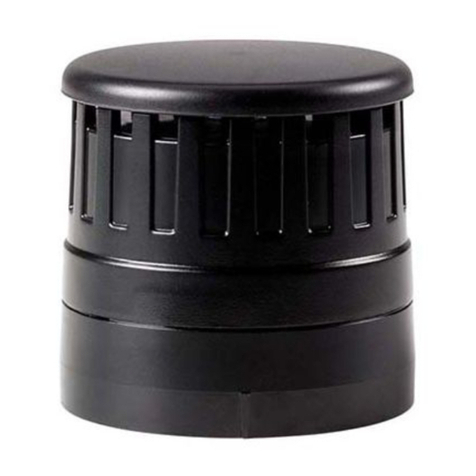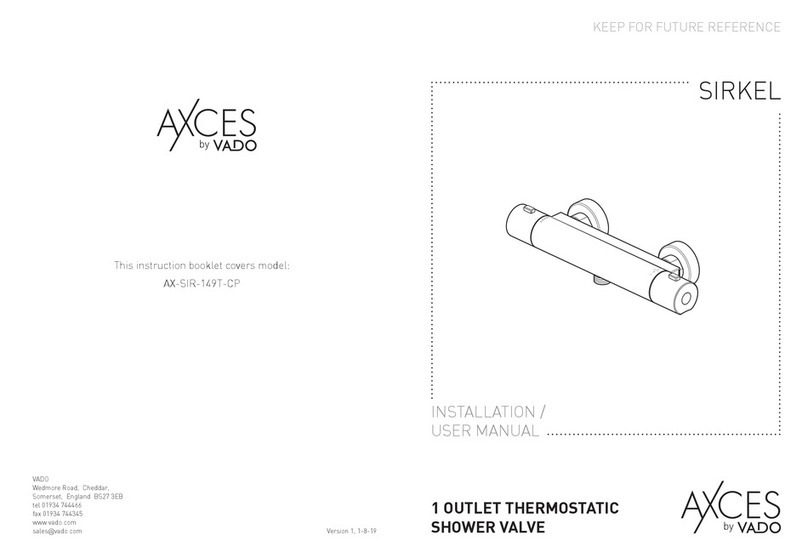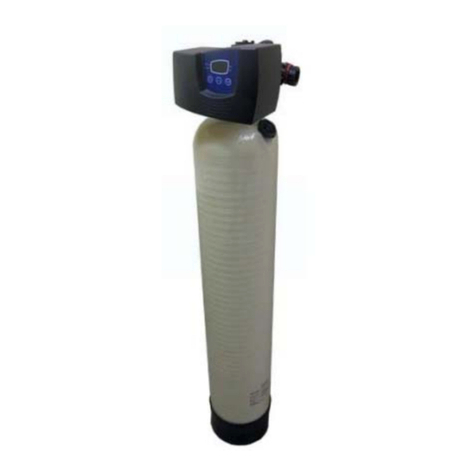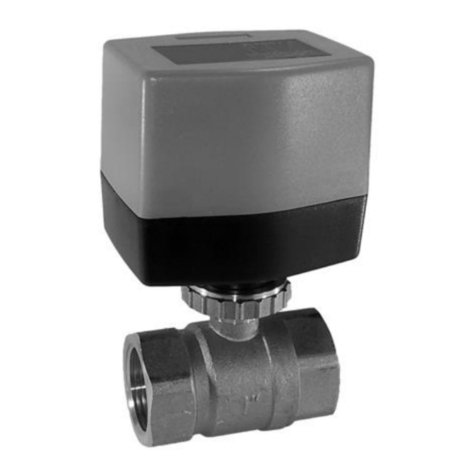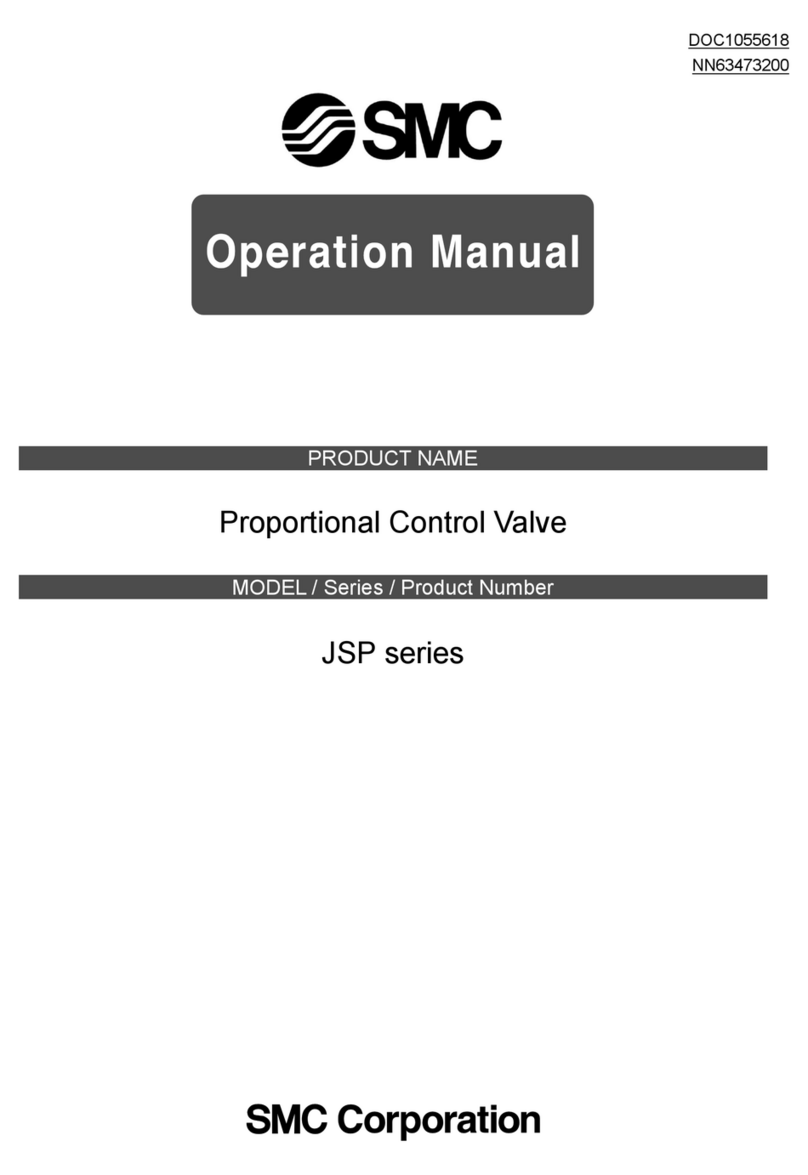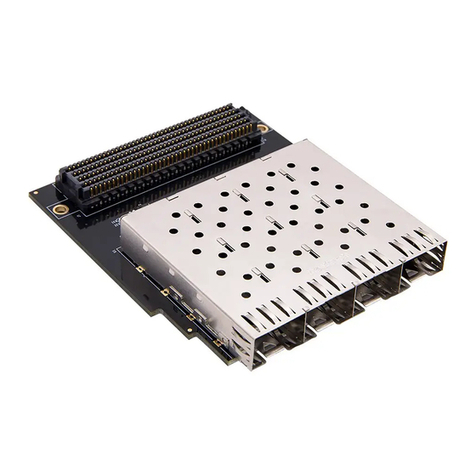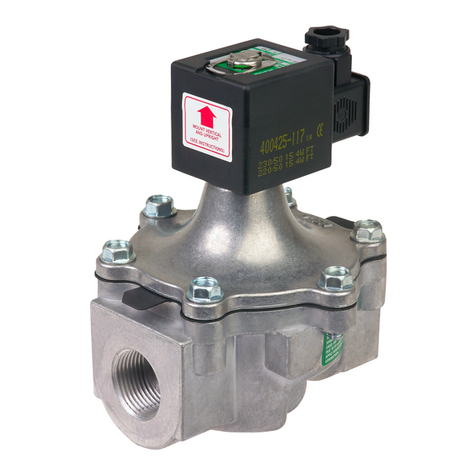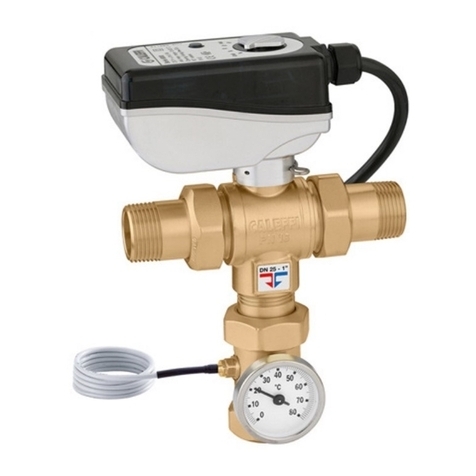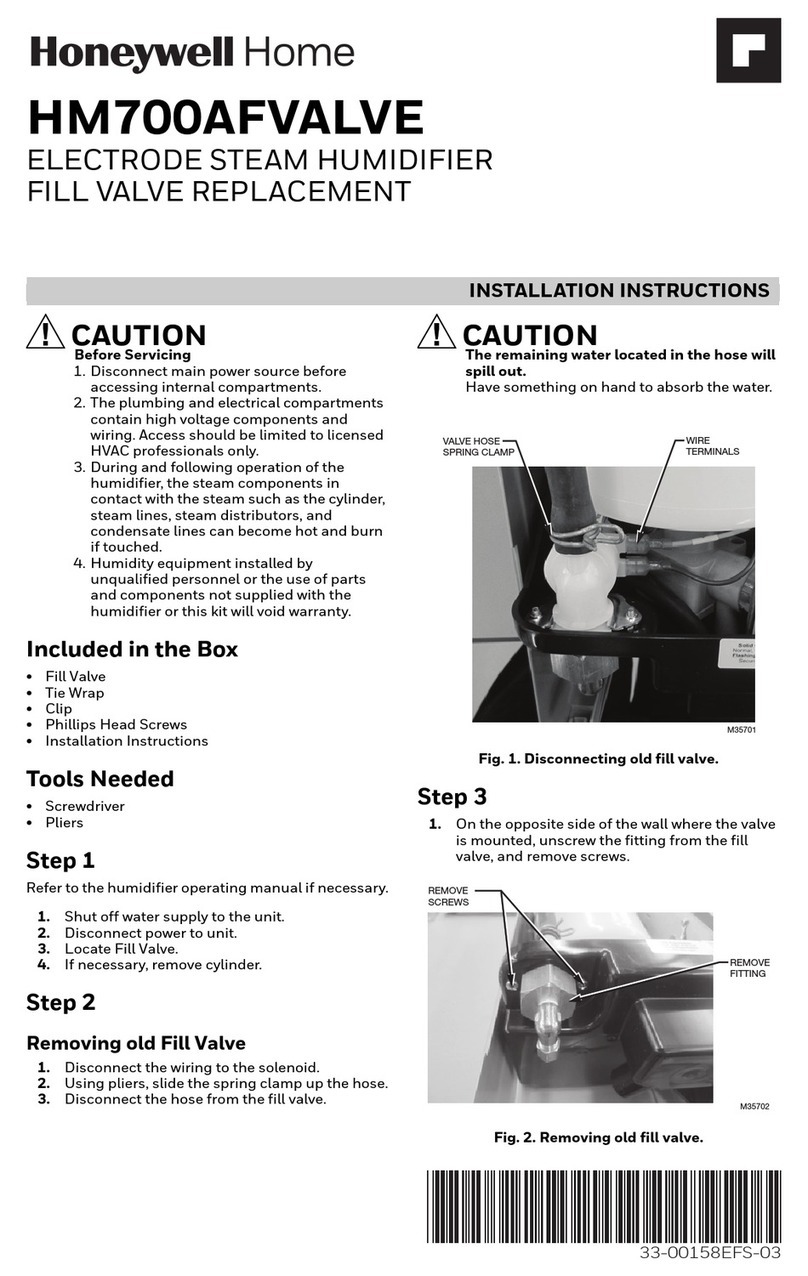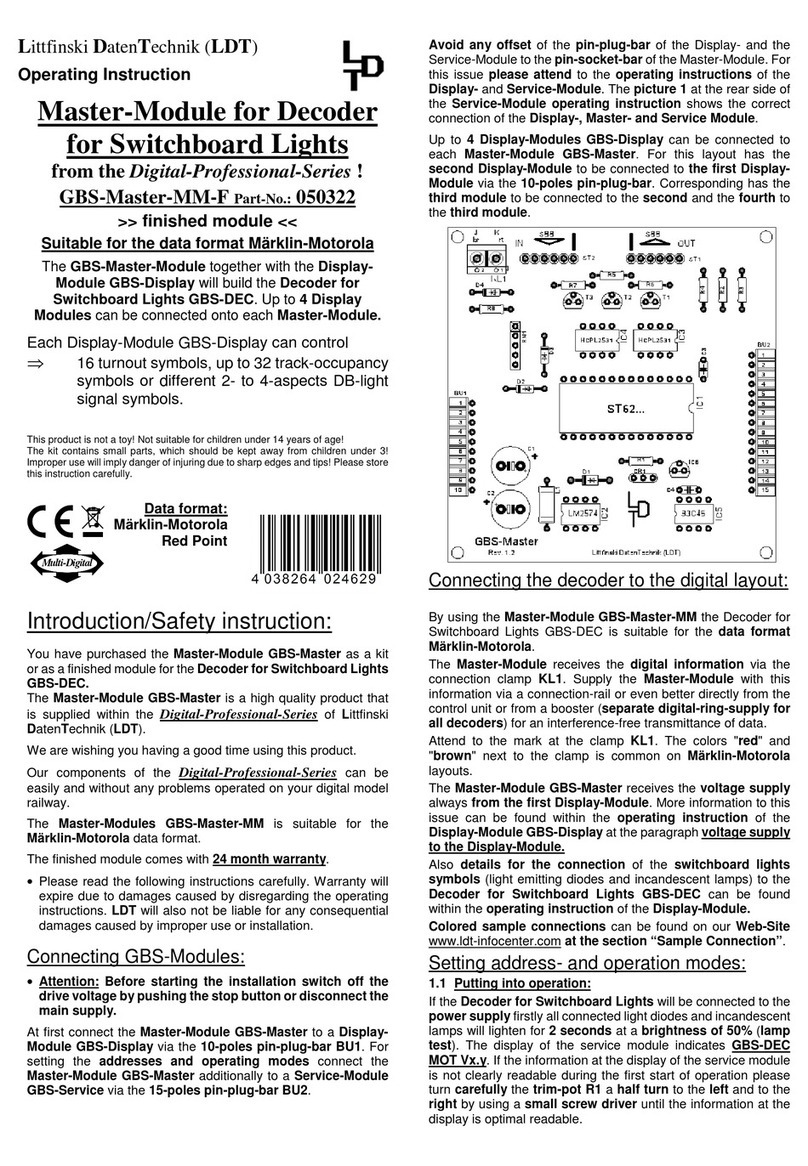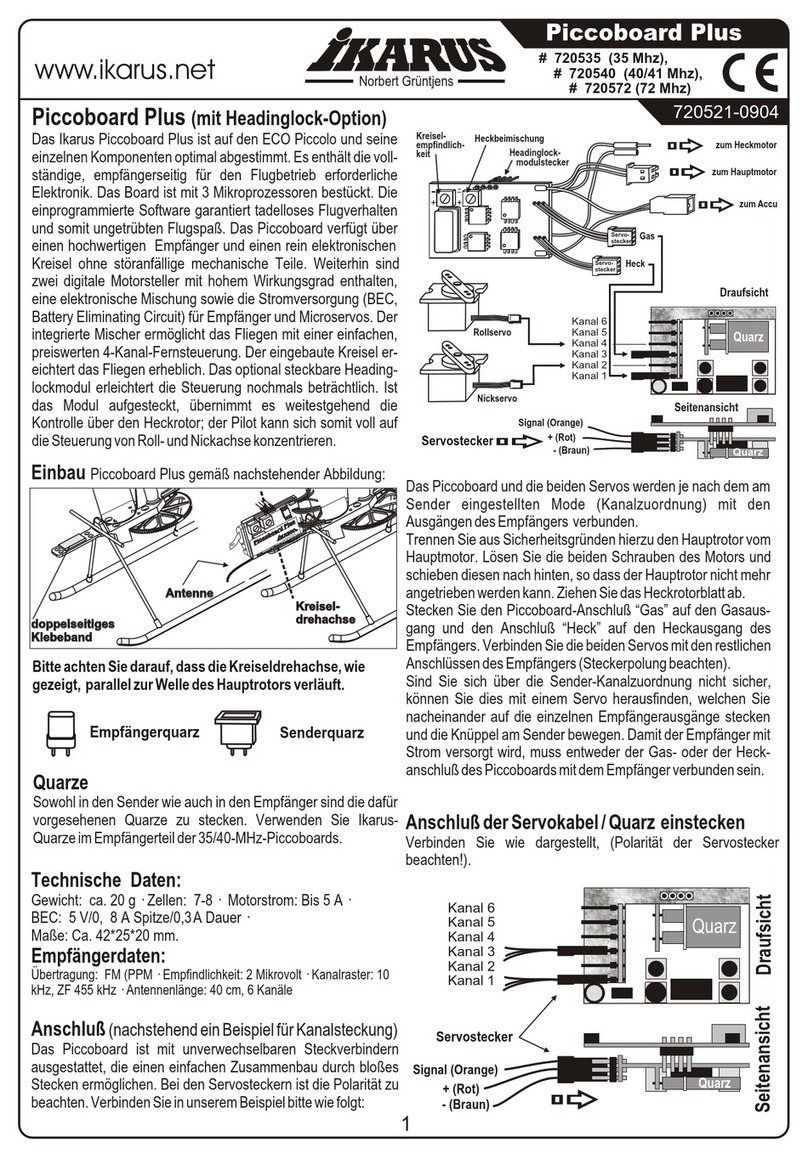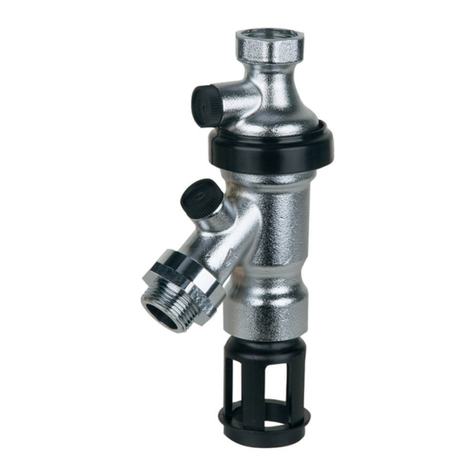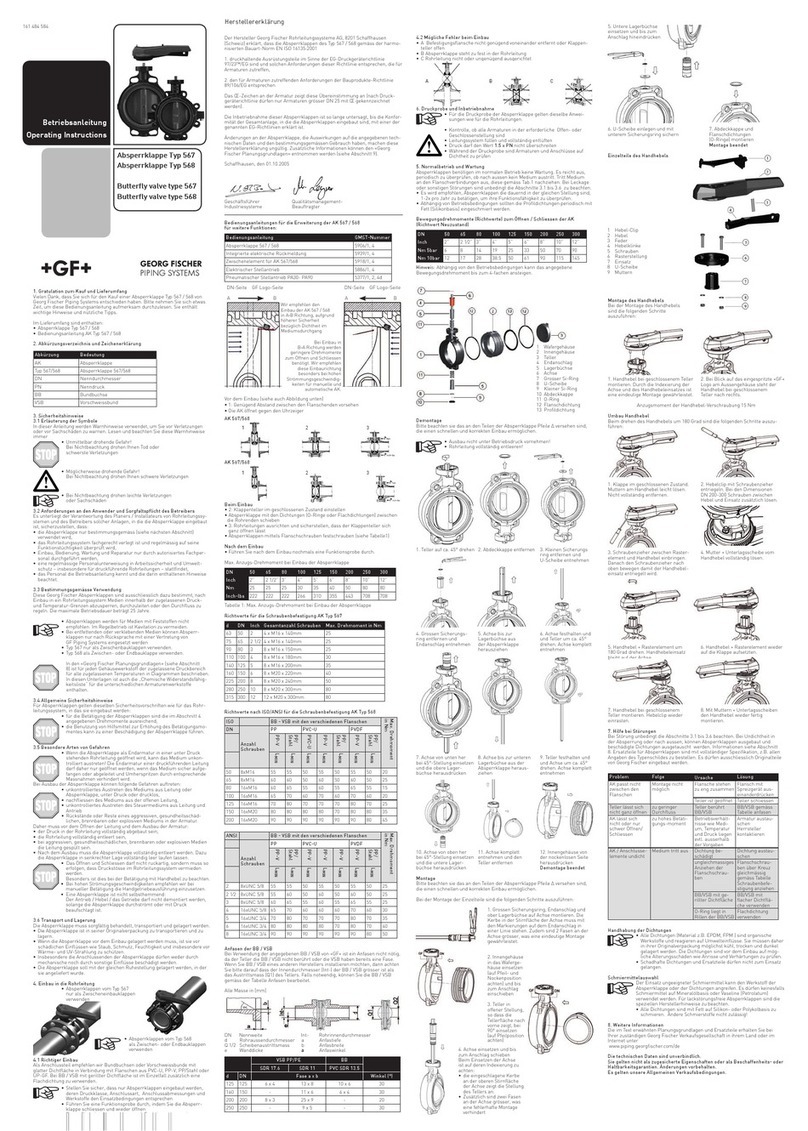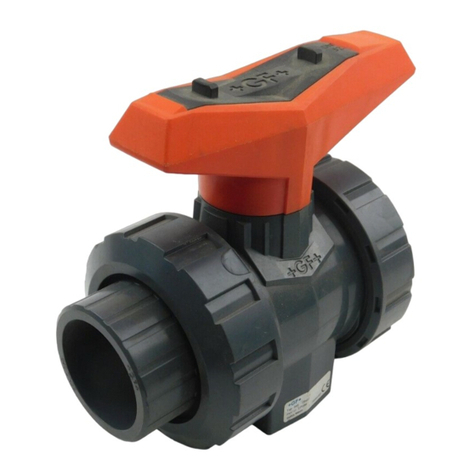
18
Operating InstructionsDiaphragm valve type 514, 515, 517, 519
4.2 Installation process
►Always install the valve in the open position.
DANGER!
Use of hazardous and non-approved media!
Non-approved chemically aggressive or hot media can attack materials, cause personal injury and endanger the environment.
Components not in contact with the medium can be attacked by leakage inside the valve.
►Observe the safety data sheets or the applicable safety regulations for the media used.
►Check the compatibility of the valve materials with the medium.
►Do not use unapproved media.
►Regularly check the valve for wear and, if necessary, perform service.
►Wear appropriate protective equipment.
►For hot media: Work only on cooled down system.
►In case of uncertainty regarding approved media, contact the GF Piping Systems sales company.
CAUTION!
Thermal expansion forces on piping system!
Preventing thermal expansion during temperature changes results in axial or bending forces. Piping system and valve may be da-
maged.
►Make sure that the forces are absorbed by suitable fixed points before or behind the valve.
CAUTION!
Damage due to increased Operating torque!
Risk of injury and/or damage to property due to the use of non-designated aids to increase the Operating torque.
►Operate the valve only with the intended actuating means (lever, transmission and actuator) according to the Operating torque
specified in the technical documentation.
►Mount the valve as a fixed point, or fasten the associated pipe directly upstream and downstream of the valve with associated
retainers.
►If increased Operating torque occurs, check valve for damage or wear.
CAUTION!
Pipe not in alignment!
Risk of injury and/or damage to property due to leakage of the piping system because of stress forces in the piping system.
►Make sure that the valve and pipe are aligned with each other.
4.2.1 Radially mountable and dismountable valve
All materials with Valve body type 514
1. Loosen the union nuts and slide them onto the intended pipe ends.
2. Depending on the type, cementing, screwing or fusing the connecting parts onto the pipe ends (see GF Planning Fundamentals
Industry - Glued/Fused connections).
3. Place the diaphragm valve between the connection parts.
4. Tighten the union nuts manually.
WARNING!
Tighten union nuts up to DN50 only hand-tight!
Risk of injury and/or material damage due to leaking liquids caused by overtightened or defective union nuts.
►Tighten union nuts up to DN50 only hand-tight, without auxiliary tools.
►Tighten the union nuts from DN50 with a strap wrench as per the tightening torque specified in the technical documentation.
4.2.2 Adhesive joint
PVC-U, PVC-C and ABS - Types 514, 515
Only join identical materials. After the curing time, flush the pipeline section with water without pressure (see chapter "Jointing
technology" in GF Planning Fundamentals Industry).




















